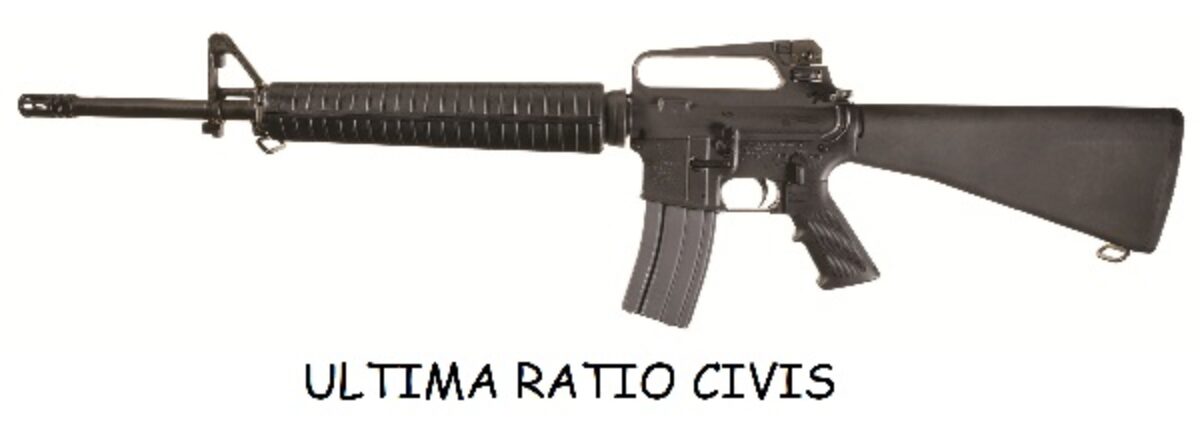The Final Two 9th Circuit Gun Decisions of 2024
Yesterday, Monday, December 30, 2024, the 9th Circuit Court of Appeals published its final two decisions in cases involving guns.
The first decision involved the Federal law that permanently disbars persons convicted of misdemeanor domestic violence from possessing firearms, and the second involved a dispute over what constitutes an arrest when police see a handgun on the floor of an automobile in a state where that is legal.
The first decision is well written and meticulous and leaves no question as to why the three-judge panel reached its decision, a decision they would rather have gone the other way were it not for binding prior precedents.
The second decision does not explain why it reached its conclusion, and more importantly, the decision does not explain how future three-judge panels and district court judges are to comply with what is now a binding circuit precedent. Moreso, given that the facts laid out in the decision do not justify the panel’s conclusion under already binding prior 9th circuit precedents.
First, the well-written decision by 9th Circuit Court of Appeals Judge Morgan B. Christen. She is certainly no friend of the Second Amendment, but if there were a candidate for the most intelligent Court of Appeals judge, she would be the one to bet on. The case is US v. Michal Blake DeFrance No. 23-2409.
The first three paragraphs of the opinion summary succinctly describe the case’s what and why, but I will take a stab at an even simpler explanation. In short, if one is convicted of a state law crime of domestic violence, and that state law crime is broader than the Federal definition, even if the state has never prosecuted someone under the broader definition, then the conviction does not qualify as a crime of domestic violence under Federal law. Not even if the crime one committed, such as beating one’s wife or girlfriend, does qualify as a crime of domestic violence under Federal law. You can view the oral argument below.
You can read the opinion (and concurrence) at this link.
The second case is US v. Larry Send In. The opinion is by Judge Gould and was joined by 9th Circuit Court of Appeals Judge Bumatay and District Court Judge Michael Seabright, the latter of whom is no friend to the Second Amendment.
A fun fact about the Fourth Amendment is that from 1833 to 1961, it did not apply to the states. That did not mean police could stop, search, and/or arrest anyone they wanted. Under American common law, which we inherited from English common law, one could use force, including deadly force, to resist an unlawful arrest. That was the rule in California until 1957 when the California legislature repealed that centuries-old common law right. The California Supreme Court upheld the repeal in 1970.
Incorporating the Fourth Amendment right against the states in 1961 means the courts have had far more opportunities in 64 years to poke holes in the right. The decision in this case is yet another hole punched in the right.
Another fun fact is that California once had a bright-line rule. If you were stopped by the police and not free to go, you were under arrest.
The Federal Courts invented the notion that one can be stopped and handcuffed without it being an arrest. It is a “detention,” in which cases often turn on whether or not the detention was lawful and, in this particular case, at what point an arrest occurs. The California Supreme Court has abandoned its bright-line rule for the murky waters of the Federal Courts.
Of course, police forces as we know them today did not exist in the United States until the early 20th century. Before World War II, most arrests were made by private citizens, and private citizens likewise made most criminal prosecutions.
It was not until the 1970s that the US Supreme Court gave prosecutors and judges “absolute immunity” from civil prosecution in the Federal Courts, but I digress.
Under modern Fourth Amendment jurisprudence, judges look to the totality of the facts in making their decisions. In this case, the district court judge suppressed the gun found in Mr. In’s car, but the panel reversed. Why? I don’t know. Professor Shaun Martin at the University of San Diego School of Law doesn’t seem to know either. He wrote about the case on his blog.
When you read the decision, keep in mind that lying to a police officer is not in and of itself a crime, and Mr. In’s lying to police about having a gun in his car was not probable cause for an arrest, according to the panel. Indeed, none of the facts of the case viewed in isolation or the totality of the circumstances constituted probable cause for an arrest, and if Mr. In had, in fact, been arrested instead of detained for officer safety, then the gun would have been suppressed.
Neither police officer safety nor public safety is a magic talisman. But despite this decision conflicting with prior circuit precedents, it is doubtful that an en banc petition will be granted in this case. There are just too many judges in the 9th Circuit Court of Appeals who don’t care a fig about the Fourth Amendment, especially when the case involves guns.
You can view the oral argument below.
You can read the opinion at this link.

